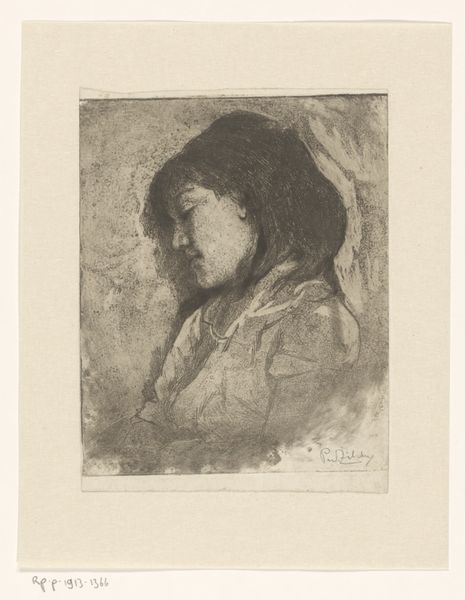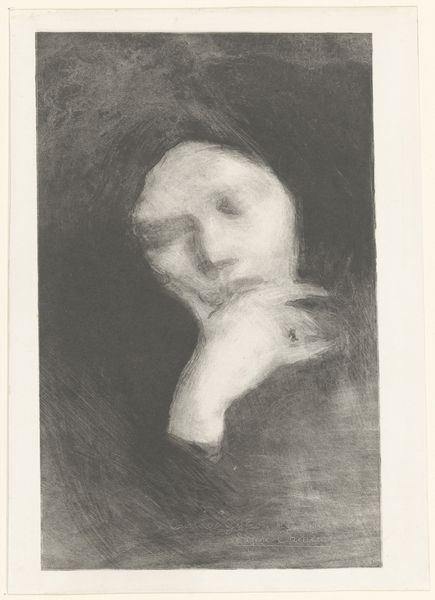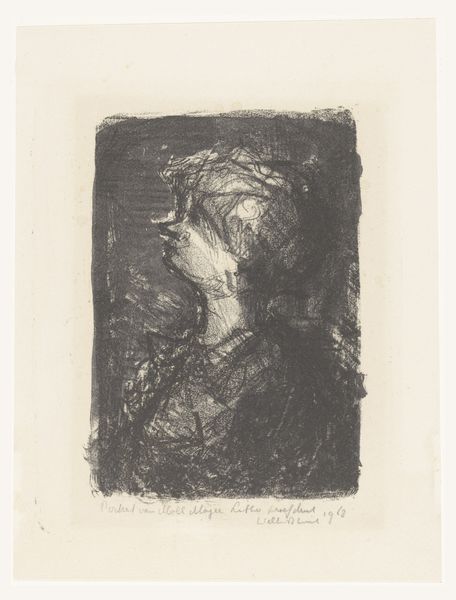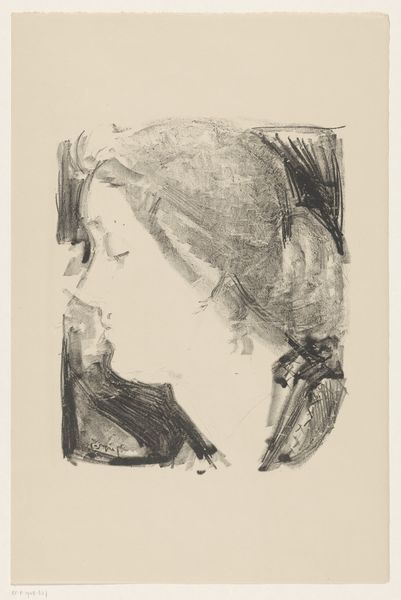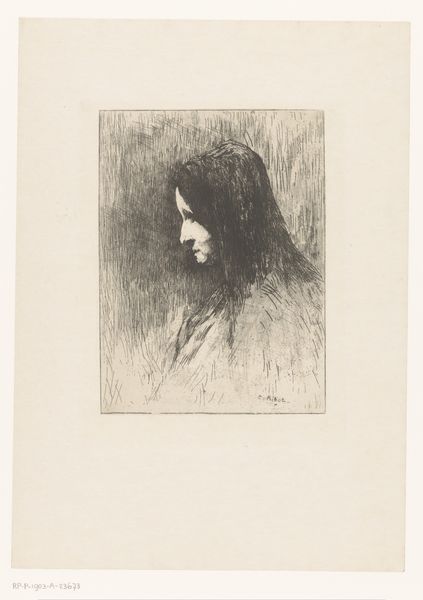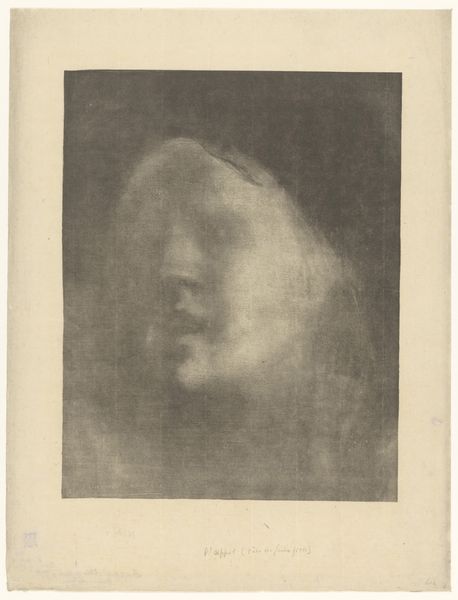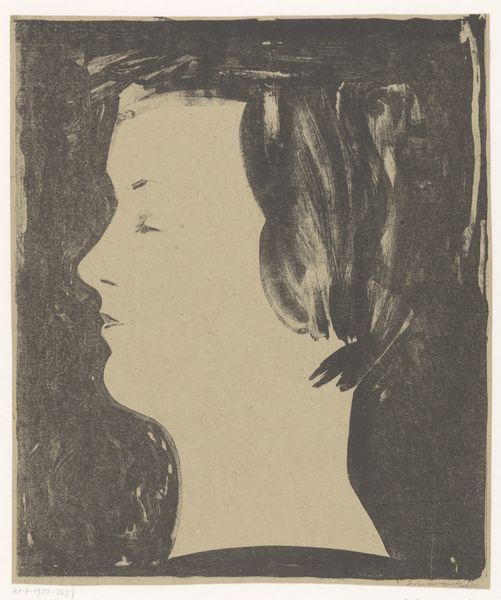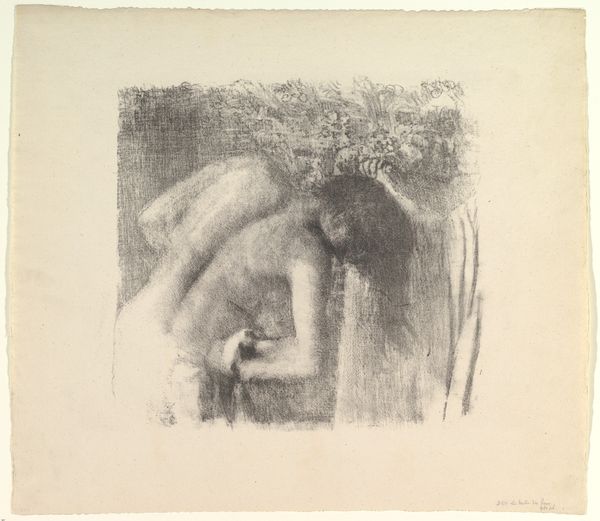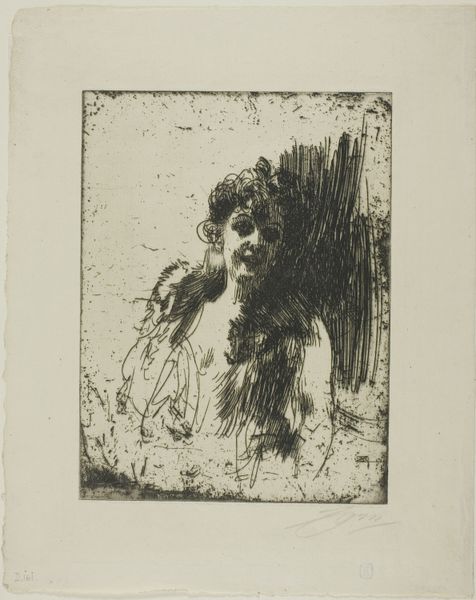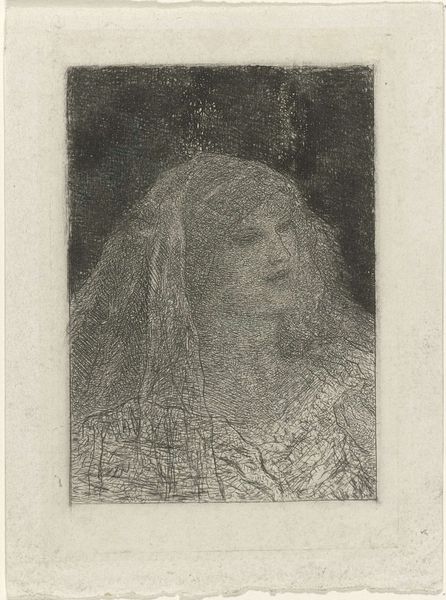
drawing, lithograph, print, paper, ink
#
portrait
#
drawing
#
lithograph
# print
#
paper
#
ink
#
pencil drawing
#
symbolism
Dimensions: 290 × 246 mm (image); 429 × 326 mm (sheet)
Copyright: Public Domain
Curator: Today, we’re looking at Odilon Redon’s 1897 lithograph, “Child’s Head with Flowers," held at the Art Institute of Chicago. The work is executed in ink on paper. Editor: Immediately, I'm struck by the mood. There’s something melancholic about the averted gaze of the child and the hazy, dreamlike quality of the floral surround. Curator: Indeed. Redon, known for his Symbolist leanings, was particularly adept at creating atmospheres through subtle gradations of tone. Note how the lines articulate both the child’s features and the surrounding botanical elements in such a unified, almost nebulous way. There's a deliberate flattening of form. Editor: But within that flatness, the portrait becomes more than just a representation of a child. Considering the social constraints placed upon women at the end of the 19th century, especially regarding their role in artistic circles, could this floral framing hint at societal expectations, confining their expressions of selfhood? Curator: An interesting perspective! Formally, the composition leads the eye in a circular path. The head occupies the visual center, the delicate inking of the face contrasting subtly with the darker foliage surrounding it, and that stark contrast highlights the face as the sole focal point of this lithograph. Editor: And it is precisely in the framing of her face within those 'constraints' of society that perhaps the work speaks to the silencing of younger generations of female creatives. In this period many faced not only external pressure from social constructs, but perhaps also pressures from within their families, stifling self-expression and preventing them from following more unorthodox professional or artistic goals. Curator: Whether or not it's a commentary, what is clear is the sensitivity in Redon’s technique. Through careful rendering of textures and a soft tonality, the artist has crafted an ambiguous psychological space, reflective of Symbolism's interests in the psyche. Editor: Well, as we consider this piece from intersecting angles, what ultimately emerges is the portrait of youth—perhaps an opportunity missed and an invitation to revisit our relationship with those that may look up to us. Curator: Perhaps. Thank you for offering us so many food for thoughts and let’s leave it there and leave visitors the final assessment on it!
Comments
No comments
Be the first to comment and join the conversation on the ultimate creative platform.

